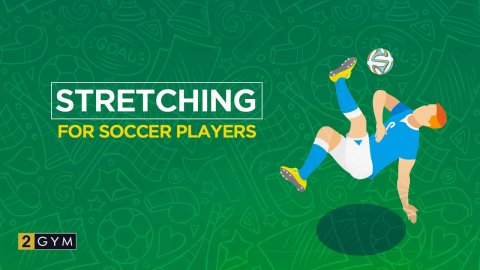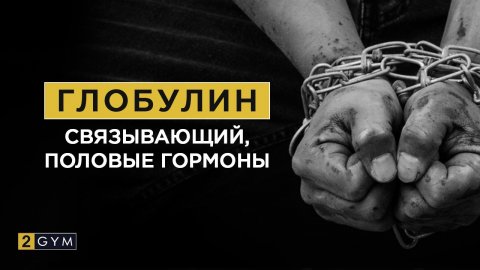Review of the Significance of Injury Prevention in Football
The essence of injury prevention in football (soccer) lies not only in reducing the number of players sidelined due to injuries but also in creating conditions for maximum training and game efficiency.
Injuries can not only halt a footballer's career but also harm the team as a whole, as the absence of even one key player can significantly diminish the chances of success.
Furthermore, injuries can have long-term consequences for the health and well-being of athletes, making injury prevention even more crucial.
Various studies in sports medicine show that many football injuries can be prevented through appropriate player preparation, monitoring their physical condition, and implementing specialized prevention programs.
These programs include both general approaches to strengthening muscles and joints and individual preventive methods tailored to each player's characteristics.
The Importance of Stretching in Footballers' Overall Preparation
One of the key aspects of injury prevention in football is stretching. Stretching plays a vital role in footballers' overall preparation, helping them maintain muscle and joint flexibility, thereby reducing the risk of various injuries such as strains, sprains, and fractures.
Effective stretching involves a series of exercises aimed at warming up and increasing the range of motion in the joints.
This helps improve blood circulation and prepare muscles for physical activity, reducing the likelihood of injuries during training sessions and matches.
In addition, stretching contributes to improving coordination and balance, which are also important for injury prevention.
It's important to note that stretching should be properly incorporated into the overall training program and should not replace other aspects of physical preparation, such as strength training and cardio exercises.
However, when combined with other prevention methods, stretching plays a crucial role in maintaining footballers' health and enhancing their athletic performance.
Thus, injury prevention in football, including proper stretching as part of overall preparation, plays a decisive role in ensuring players' health and success.
Effective prevention programs, based on scientific research and practical experience, are necessary to ensure safety and performance in this exciting sport.
Injuries Associated with Lack of Stretching
Failure to stretch or inadequate stretching can lead to serious injuries in footballers. One of the most common types of injuries caused by insufficient muscle flexibility is strains.
Muscle strain occurs when there is a sudden stretching or overloading of the muscular apparatus, which can happen during sudden changes in pace or unexpected turns on the field.
This injury is often accompanied by painful sensations, limited range of motion, and temporary sidelining of the footballer. Additionally, inadequate stretching can lead to more serious injuries such as sprains and fractures.
Underprepared muscles and joints may be less resilient to external forces, increasing the likelihood of injury from forceful impact or a misstep.
The Impact of Stretching on Muscle Flexibility and Elasticity
Stretching plays a crucial role in maintaining muscle flexibility and elasticity, which is a key factor in successfully executing movements on the football field and preventing injuries.
Muscle flexibility allows footballers to perform a wide range of movements without the risk of injuries. This is particularly important in situations requiring quick and sharp turns, maneuvers, and strikes.
In addition, stretching contributes to improving muscle elasticity, allowing them to better adapt to physical exertion and reduce the risk of overloading or tearing. Elastic muscles are better able to absorb impacts and contractions, making them less prone to injuries.
Injuries That Can Be Prevented Through Stretching
Stretching is an important component of the training process for footballers, as it not only improves flexibility and prepares muscles for physical activity but also can significantly reduce the risk of various injuries.
Let's consider two aspects in which stretching holds particular importance for injury prevention - knee joint injuries and ligament and muscle injuries.
Stretching to Prevent Knee Joint Injuries
Knee joints are among the most vulnerable areas for footballers as they are subjected to high loads and frequent sudden movements.
Stretching can significantly reduce the risk of knee joint injuries by increasing their flexibility and improving blood circulation in the surrounding tissues.
Stretching exercises for quadriceps, hamstrings, calves, and thigh muscles help warm up and relax these muscles, reducing strain on the knee joints during movement.
This is particularly important for preventing injuries such as sprains and ligament tears, as well as meniscal damage.
In addition, stretching contributes to improving balance and coordination, which also helps reduce the likelihood of knee joint injuries associated with instability and unsuccessful movements on the field.
The Importance of Stretching for Preventing Ligament and Muscle Injuries
Ligament and muscle injuries are another common issue among footballers that can be prevented through regular stretching. Stretching helps improve the elasticity and resilience of ligaments, making them less susceptible to strains and tears during intense movements on the field.
Stretching exercises for the back, shoulder muscles, thighs, and calves help improve flexibility and prepare the body for physical activity.
This is particularly important for preventing injuries associated with unexpected movements, contact situations, and strong impacts.
Regular stretching also helps reduce muscle tension, which helps lower the risk of muscle injuries and strains.
Effective Stretching Techniques for Footballers
Stretching is an important element of footballers' preparation, helping prevent injuries, improve flexibility, and prepare muscles for physical exertion.
Let's consider three effective stretching techniques for footballers: dynamic stretching before training and matches, static stretching after training, and alternating stretching of different muscle groups.
Dynamic Stretching Before Training and Matches
Dynamic stretching involves performing exercises with gradual increases in the range of motion and speed. This type of stretching helps warm up the muscles, improve blood circulation, and prepare the body for intense physical activity.
Dynamic stretching before training and matches may include exercises such as jogging in place, jumping jacks, lunges, and arm swings.
The benefits of dynamic stretching include activating muscles and joints, improving coordination, and preparing footballers for intense physical exertion on the field.
Static Stretching After Training to Improve Flexibility
Static stretching involves holding a particular stretch position for a set period, usually between 15 to 60 seconds. This type of stretching is recommended to be performed after training when the muscles are already warmed up and more prepared for stretching.
Static stretching after training helps improve muscle and joint flexibility, reduce the risk of injuries, and speed up the recovery process after physical exertion. Static stretching exercises may include forward bends, hip and calf stretches, as well as back and shoulder stretches.
Alternating Stretching of Various Muscle Groups
Alternating stretching of various muscle groups allows for evenly stretching all muscles in the body and improving their flexibility. This method involves performing stretches for different muscle groups sequentially, starting from the upper body and ending with the lower extremities.
Alternating stretching helps prevent uneven muscle tension and reduces the risk of overstraining. This method also contributes to improving overall flexibility and preparing the body for various movements on the field during the game.
Stretching Exercises for Footballers
Stretching plays an important role in preparing footballers for training and matches, helping prevent injuries, improve flexibility, and prepare muscles for intense physical activity. Below are stretching exercises for various muscle groups, specially adapted for footballers.
Stretching and Relaxation of Calf and Achilles Muscles
- Sit on the floor with your legs extended in front of you.
- Place your hands on the floor behind your body for support.
- Lift one leg, bend it at the knee, and place the foot on the floor next to the extended leg.
- Lean forward, trying to touch the foot of the extended leg.
- Feel the stretch in the calves and Achilles tendons.
- Hold the pose for 20-30 seconds, then switch legs.
This exercise helps stretch and relax the calf and Achilles muscles, which are often tense in footballers due to a lot of running and jumping on the field.
Hip and Glute Stretching
- Get on all fours, supporting yourself with your hands and knees.
- Move one leg forward, bend it at the knee at a 90-degree angle, and place the foot on the floor next to your hand.
- Slowly lean forward, trying to sit on your hip.
- Feel the stretch in the hip and glutes.
- Hold the pose for 20-30 seconds, then switch legs.
This exercise helps improve flexibility and prepare the hips and glutes for intense physical activity on the field.
Exercises for Stretching the Back and Neck
- Sit on the floor with a straight back.
- Turn your head to the right, trying to touch your ear to your shoulder.
- Hold the pose for 15-20 seconds, then repeat on the left side.
- For back stretching, sit on the floor with your legs straight.
- Bend your right knee and cross it over your left thigh.
- Turn to the right, wrapping your left elbow around your right knee.
- Hold the pose for 15-20 seconds, then repeat on the other side.
These exercises will help relieve tension in the back and neck, improve flexibility, and readiness for movements on the field.
The Importance of Stretching in Developing Strength and Flexibility
Stretching plays an important role in developing strength and flexibility in footballers. Regular stretching exercises help improve muscle and joint flexibility, allowing footballers to perform a wider range of movements on the field.
More flexible muscles also have greater potential for developing strength and endurance, which is important for achieving high athletic performance.
Incorporating stretching exercises into footballers' training programs helps prevent injuries, improve performance, and prepare the body for intense loads on the field.
Regular stretching becomes an integral part of caring for the health and success of footballers at all levels of the game.
Practical Recommendations for Incorporating Stretching into Training Programs
Incorporating stretching into footballers' training programs plays a critical role in injury prevention, improving flexibility, and readiness for typical movements performed on the field according to football rules.
When considering stretching exercises, it is important to consider their alignment with typical movements in the game.
Regularity and Sequence of Stretching
Stretching should be performed regularly both before and after training sessions and matches to prepare the muscles for intense loads and expedite the recovery process.
The sequence of stretching exercises should reflect typical movements on the field: for example, stretching the calves and Achilles tendons can help prepare for running and jumping, while hip and glute stretches can prepare for acceleration and turns.
Individual Approach to Exercise Selection
Given the variety of movements in football, it is important to provide footballers with individual exercises tailored to their needs and characteristics.
For example, hip and glute stretching exercises may be particularly useful for players who frequently perform lateral kicks or change direction.
The Importance of Correct Stretching Technique
Proper stretching technique ensures its effectiveness and safety, which is especially important in the context of football rules.
For example, stretching the calf and Achilles muscles helps prevent injuries associated with sudden starts and stops, while hip and glute stretching improves flexibility for more effective shots and passes.
In conclusion, understanding typical movements in football and their connection to stretching exercises allows coaches to create effective training programs that take into account the specifics of the game.
Football rules influence the choice of specific training methods and exercises, so it is important to adhere to them when developing training programs for maximum player readiness for competitions.
















Log in with ( Sign Up ? )
or post as a guest
Be the first to comment.